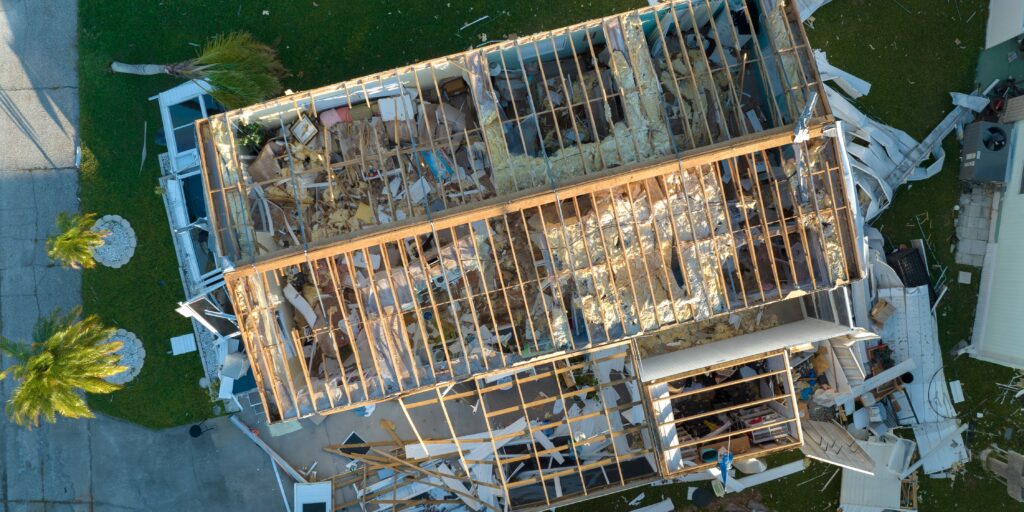Fast disaster recovery construction projects
There is profound wisdom embedded in the age-old saying attributed to Benjamin Franklin, “An ounce of prevention is worth a pound of cure.” In today’s rapidly changing landscape, these words resonate with a heightened sense of urgency. The National Centers for Environmental Information (NCEI) paints a stark picture in the United States: 2022 alone witnessed 18 separate weather and climate disasters, each inflicting damages surpassing $1 billion. And 2023 has already surpassed this number with 24 confirmed natural disaster events. Behind these staggering numbers lie stories of communities grappling with loss, schools trying to find their footing and local governments striving to restore normalcy.
State, county and municipal government agencies are tasked with the difficult job of leading their communities out of the dark days following a natural disaster. This includes coping with the loss that has been suffered, ensuring public safety, figuring out how to reopen schools safely and doing their best to return to the day-to-day rhythms of life. An essential task of this disaster response is rebuilding damaged or destroyed buildings as quickly as possible.
The unseen challenges of disaster’s aftermath
While the immediate devastation of natural disasters captures headlines, the challenges that surface in their wake often remain obscured from public view. The path to recovery is seldom linear, fraught with a myriad of obstacles, including these four prominent issues.
- Contractor scarcity: In the aftermath of a disaster, there’s a scramble to secure contractors. The most skilled ones, familiar with local nuances, are invariably in high demand. This often leads to organizations settling for unfamiliar contractors, increasing the risk of miscommunications and potential rework.
- Economic surges: The law of supply and demand takes a tangible form as construction materials, labor and equipment experience sudden price hikes. For many local governments and K-12 institutions operating within tight budgets, these unexpected surges can derail recovery plans.
- Navigating the compliance maze: Securing financial relief from agencies like the Federal Emergency Management Agency (FEMA) involves meeting stringent requirements. The administrative burden, coupled with the urgency to rebuild, can strain already stretched resources.
- Logistical hurdles: The nature of disasters means that the logistics of construction—transporting materials, ensuring equipment availability and even accessing sites—can become nightmarishly complicated.
The promise of Job Order Contracting (JOC)
In this landscape of uncertainty, Job Order Contracting (JOC) emerges as a beacon of structured hope. For those unfamiliar, JOC is an alternative construction procurement method, offering a streamlined approach to disaster response. JOC is an Indefinite Delivery Indefinite Quantity (IDIQ) construction delivery method that allows many projects to be completed through a competitively awarded contract. This single-solicitation process enables projects to start faster and creates partnerships between project owners and awarded contractors, resulting in higher quality work.
But what makes JOC stand out in the post-disaster chaos?
- Contractor availability: With a pool of pre-vetted, competitively awarded contractors, JOC better ensures that when disaster strikes, a skilled team is standing by to assist.
- Predictable costs: Budget overruns are a common post-disaster headache. JOC, with its pre-established pricing, acts as a financial anchor, ensuring projects remain within budgetary confines.
- Rapid response: Time is of the essence post-disaster. JOC, with its upfront contract awards, ensures that projects kick off without C delays.
Real-world scenarios further underscore JOC’s efficacy. Take Harris County, Texas, for instance. In the face of Hurricane Harvey’s wrath, the county leveraged JOC to execute more than 80 projects in a mere 14 days. Similarly, Loudon County, Va., tapped into JOC’s potential to swiftly address challenges between two historic snowstorms.
Looking ahead: The imperative of preparedness
The changing climate, punctuated by the increase in natural disasters, mandates a shift in approach. It’s no longer about merely reacting to disasters; it’s about anticipating, preparing and equipping communities to face future challenges head-on.
In this journey, tools like JOC are more than just procurement methods. They symbolize a commitment to resilience—a pledge to safeguard our communities, schools and local institutions. As Benjamin Franklin wisely noted, investing in prevention today ensures that cities and counties are fortified for the challenges of tomorrow. Redefining the narrative of preparedness will ensure that communities are not just rebuilt but are resilient, robust and ready for the future.
As vice president of sales for Gordian, Grayson Briggs leads his team as they seek to solve the significant challenges communities and organizations face while planning, building and managing their facilities and infrastructure. Gordian is the leading provider of Building Intelligence Solutions, delivering unrivaled insights, robust technology and comprehensive expertise that fuel customers’ success during every phase of the building lifecycle.



















